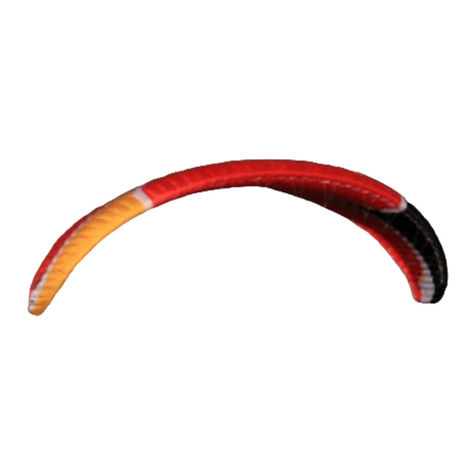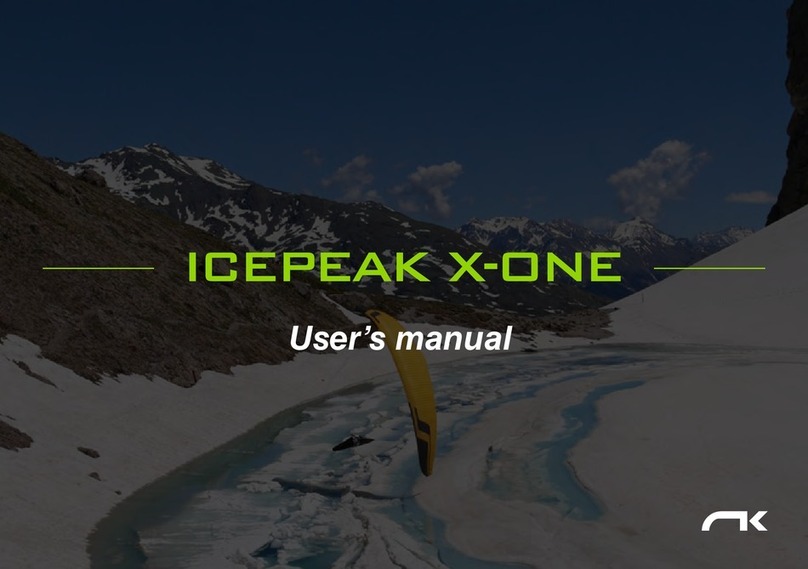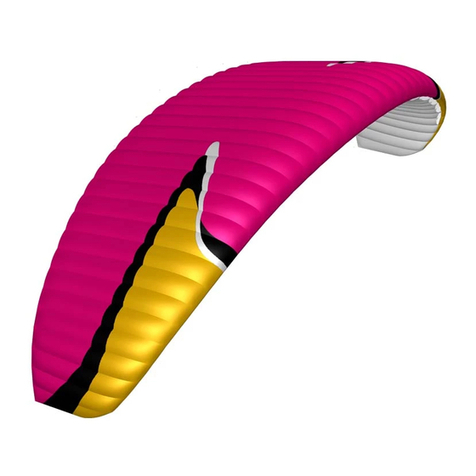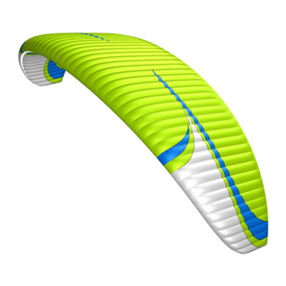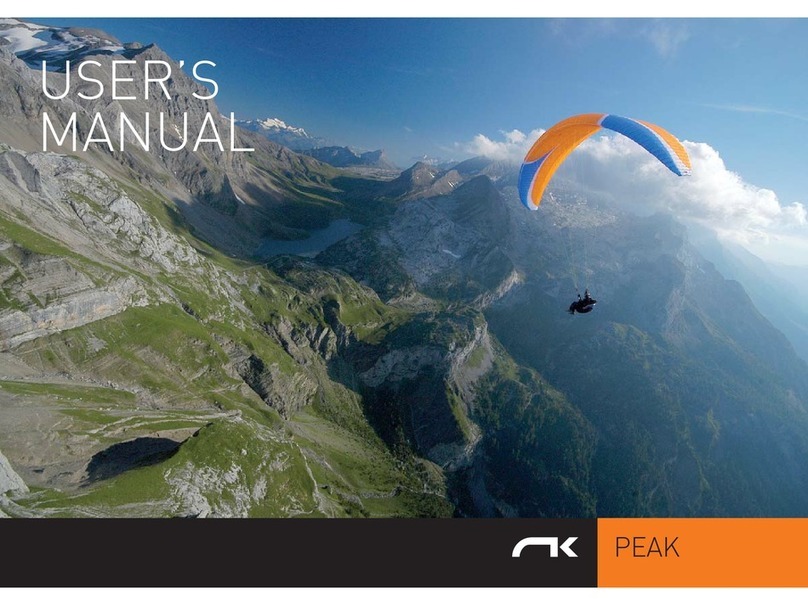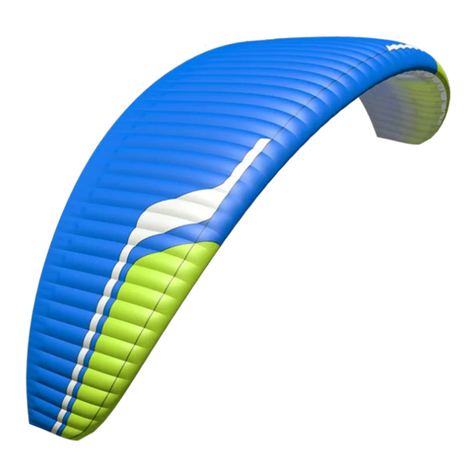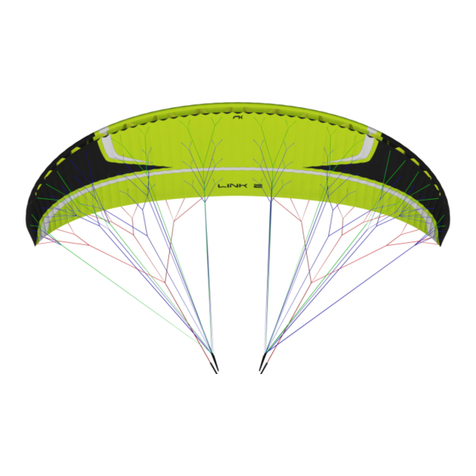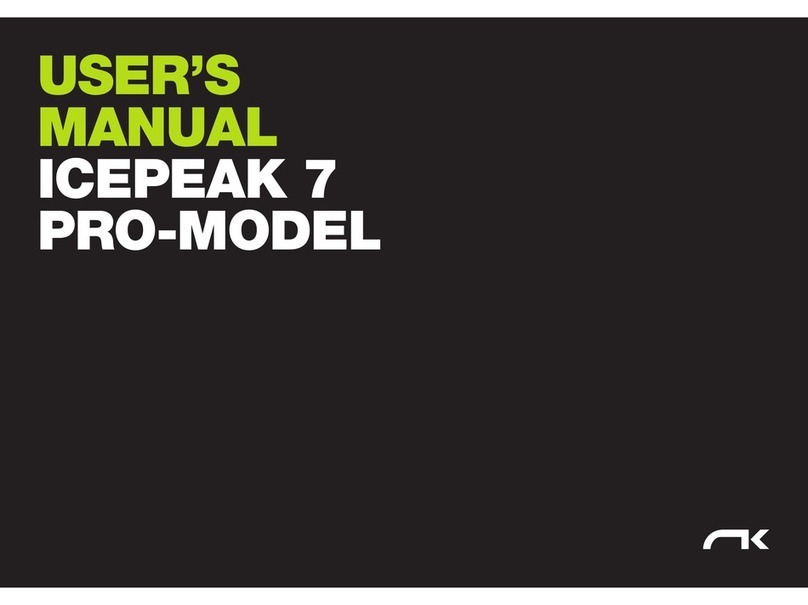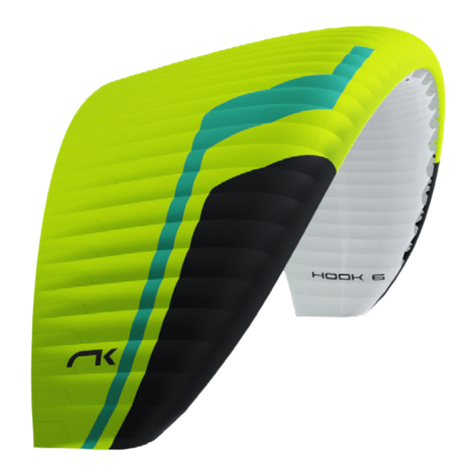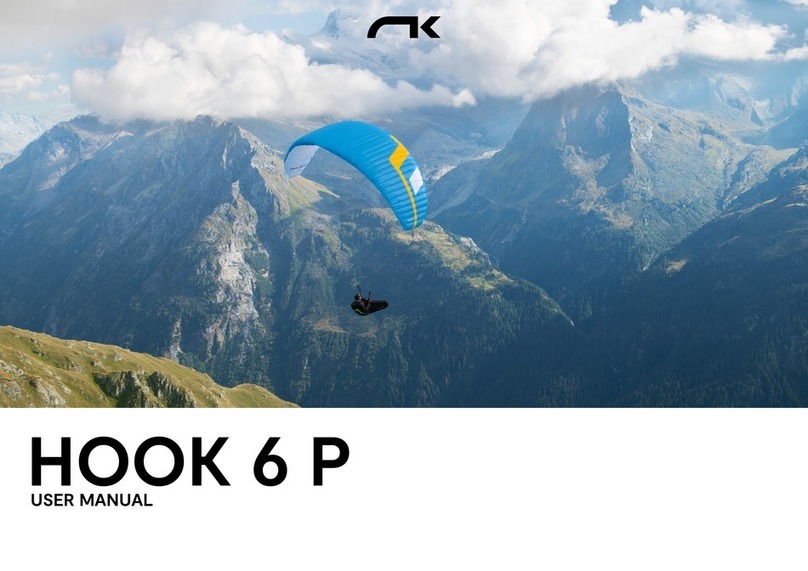9
down until the stall point is reached and held there for a few seconds. The
glider will rst pitch rearward and then reposition itself overhead, rocking
slightly, depending on how the manoeuvre was done. When entering a
stall, remain clear minded and ease off the brake lines upon reaching the
half-way point during the downward pulling motion. The wing will then
surge violently forward and could reach a point below the horizontal line. It
is most important to maintain brake pressure until the glider has returned
to its default overhead ying location.
To resume normal ight conditions, progressively and symmetrically
release the brake lines tension to regain air speed. When the wing reaches
the overhead position, the brakes must be fully released. The wing will
then surge forward to regain full air speed. Do not brake excessively as
the wing needs to accelerate to pull away from the stall conguration. If
you have to control a possible symmetrical front stall (frontal collapse),
briey pull both toggles down to bring the wing back up and release
them immediately while the glider is still in transition to reposition itself
overhead.
Wing tangle
Beware when attempting to untangle a wing while ying near a
mountainside or near other paragliders as you may lose control of the
ight path trajectory and a collision could occur as a result.
Over handling
Most ying incidents are caused by incorrect pilot impute, which could
cascade into abnormal ying congurations. Over handling could lead a
wing to violently react. The SKIN was designed to return to a normal ight
conguration by itself, do not try to over handle it.
Generally speaking, the following reactions of the wing are neither due
to the input given nor its intensity, but rather by the length of time it is
applied. The aircraft’s should regain its default ying conguration and air
speed without excessive corrections.
4.3 USING THE ACCELERATOR
The SKIN was designed to sturdily y through its entire speed range. It is
useful to accelerate when ying in strong winds or in extreme katabatic
air. When increasing the glider’s air speed, its prole becomes more
sensitive to turbulence and closer to a possible frontal collapse. A feeling
of weakening internal cell pressure should be taken as a warning, and be
counteracted by releasing the tension on the foot accelerator (speed-bar)
in addition to braking slightly, pulling the brakes/toggles down, to increase
the angle of attack while letting the glider regain its default air speed.
It is NOT recommended to accelerate near obstacles or in highly turbulent
air. If necessary to accelerate, ying actively while moderating the
accelerator pressure and monitoring brake pressure will be the wisest
course of action to take.
4.4 FLYING WITHOUT BRAKE LINES
If for any particular reason the SKIN’s brakes/toggles become disable
and prevent steering, using the D-risers and body weight shifting will
be the only recourse to reach the nearest LZ (Landing Zone) as soon as
possible. Steering with the D-risers is easily done for not being under too
much tension, however, one must be mindful not to over handle them to
the point of causing a stall or negative turn. To land, the wing will come
in at full air speed (hands up), then both “D” risers will be pulled down
evenly and symmetrically before touch down. This braking method is not
as effective as when using the brake line toggles, and hence the wing will
experience a higher than normal air speed, forcing the pilot to run faster
upon touching down.
4.5 LINE TANGLES IN FLIGHT
The best way to avoid knotted lines and tangles is to inspect them before
inating the wing for take-off. If a problem is spotted in the line cascades
